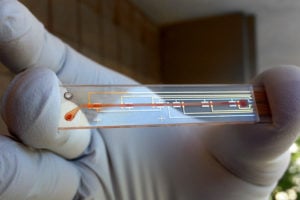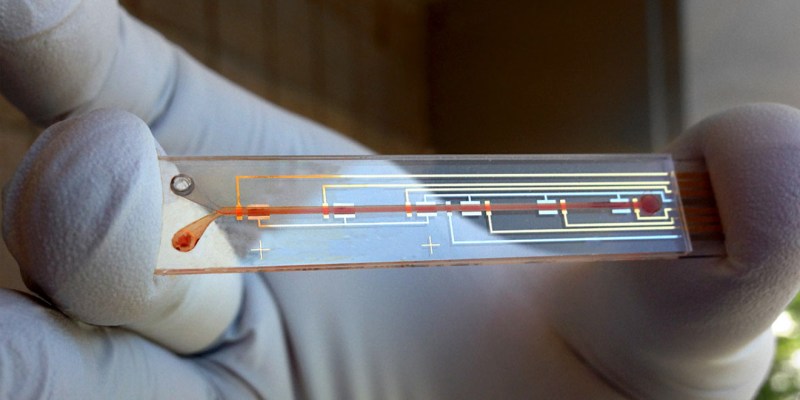
Engineers at Stanford have developed a device that could help control drug levels in the body, preventing the sometimes fatal risks associated with incorrect doses of lifesaving drugs.
The device, which monitors levels of a drug in the bloodstream to calculate and administer a personalized dose, was successful in tests of rabbits and rats at maintaining constant levels of the drug doxorubicin — a common chemotherapy drug — among individual animals with genetic and physiological differences.
If the drug is as successful in humans, it could overcome factors that lead to dosages that are ineffectively low or harmfully high, such as age, genetic makeup and unintentional drug interactions, thus administering the perfect dose of drugs for individual patients with diseases from diabetes to cancer.
The tool is created by a team led by Stanford professor of radiology and of electrical engineering H. Tom Soh and postdoctoral fellow Peter Mage. It uses an electric sensor to measure changes in aptamers, molecules designed to change shape when they bind to a specific drug. The more aptamers change shape, the higher the level of the drug is in the bloodstream. Software then determines the proper dosage, administered by a pump.
“Monitoring and controlling the actual dosage a patient is receiving is a practical way to take individual factors into account,” Soh told Stanford News.
The team of engineers has plans to optimize the device before use by human patients, including by making it small and implantable or wearable — and therefore more practical for continued use than its current larger, external form. The team also plans to develop the device’s ability to measure and regulate a wider range of biomolecules.
The device will face years of rigorous testing before it is determined to be safe for use by humans, but the technology it utilizes is a step toward improving the administration of medicine.
“This is the first time anyone has been able to continuously control the drug levels in the body in real time,” Soh said. “This is a novel concept with big implications.”
Contact Zoe Sayler at zoeneile ‘at’ stanford.edu.
